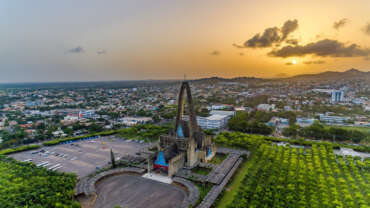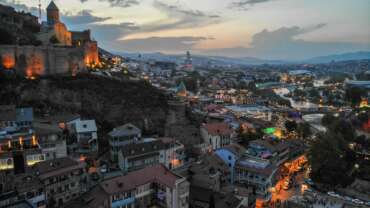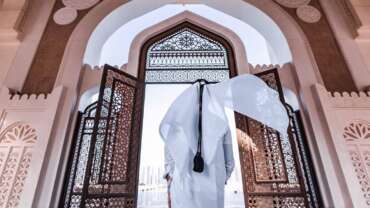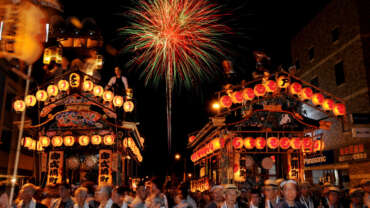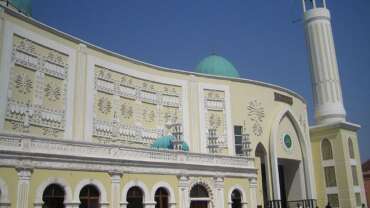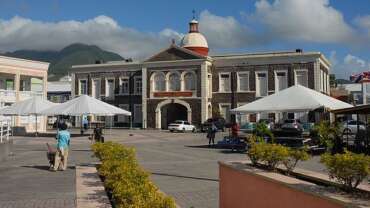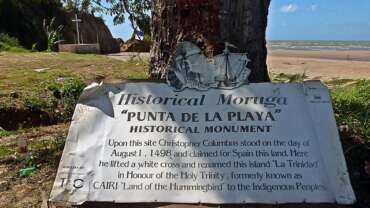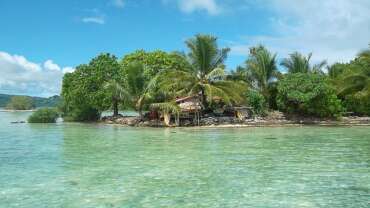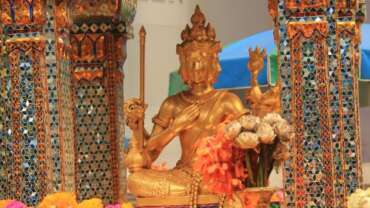It's More Fun in Switzerland!
Switzerland is a mountainous Central European country, home to numerous lakes, villages and the high peaks of the Alps. Its cities contain medieval quarters, with landmarks like capital Bern’s Zytglogge clock tower and Lucerne’s wooden chapel bridge. The country is also known for its ski resorts and hiking trails. Banking and finance are key industries, and Swiss watches and chocolate are world renowned.
History of Switzerland
Switzerland’s history is one of a medieval defensive league formed during a time and in an area lacking imperial authority. The different cantons (traditionally called Orte in German) were to a large extent independent states that remained united through the shared defense of liberty, which was understood as the protection of imperial privileges and franchises. Unlike all similar confederations (e.g., the Hanseatic and Swabian leagues) and despite endemic internal strife, especially after the Reformation in the 16th century, the Swiss Confederation survived the formation of (princely) modern states without adapting to it. With Venice, Genoa, and the Netherlands, the confederation formed the republican exception in Europe, and it developed political structures less as a unified nation than on the level of the 13 cantons that the Swiss Confederation comprised by the time of the Reformation. The early modern confederation also included, with reduced say, the Zugewandte Orte, districts and towns (such as Geneva and Graubünden) that were allied to and subsequently became a party of the confederation.
Switzerland was (along with San Marino) the only early modern republic to survive the reign of Napoleon I. It modernized its political structures in its 1848 constitution, successfully adopting liberal principles such as individual rights, separation of powers, and parliamentary bicameralism enshrined in the French Revolution (1789) and the U.S. Constitution. In the preceding period of crisis from the end of the 18th century to the mid-19th century, the confederation integrated the French- and Italian-speaking cantons and large rural areas, which earlier had been dominions of oligarchic or democratic regimes. Thus, Switzerland avoided breaking apart like other traditional states on mountain ridges such as Navarre or Savoy, which were destroyed by the idea of “natural boundaries,” or the Habsburg empire, which was eventually torn apart and reduced to its German element by those espousing nationalism. A product of the European balance of power and, after 1499, attacked only once (1798), Switzerland has enjoyed peace for most of its existence and was spared from two world wars in the 20th century, when the gradually developed concept of “armed neutrality” was respected by its neighbours. Economic prosperity largely followed as Switzerland adapted well to the Industrial Revolution and the growth of international finance markets, despite internal social strife in the decades around the turn of the 20th century.
Switzerland before confederation
Prehistoric Switzerland
Until the late Middle Ages, the territory constituting modern Switzerland never formed a single political or cultural unit. The first stone implements discovered in Switzerland are more than 250,000 years old, and early human Neanderthal hunting settlements date from about 50,000 BCE. During the last glacial period in Alpine Europe, the Würm stage, which began about 70,000 years ago, the country was covered with ice, many thousands of feet deep, that flowed down from the Alps. Animal figures carved on antlers and bones (e.g., those found in Kesslerloch date from about 10,000 BCE) prove that during interglacial periods nomadic hunters had camps in caves of the ice-free areas of the Jura and the Mittelland and followed their prey, mainly reindeer and bear, into the high mountain valleys. Toward the end of the Würm, about 12,000 BCE, Homo sapiens appeared; after the melting of the glaciers, Neolithic cultures established corn (maize) growing and animal breeding in parts of the Rhône and Rhine valleys (about 5000 BCE). From about 1800 BCE, Bronze Age settlements were scattered throughout the Mittelland and Alpine valleys.
Celtic Switzerland
During the Iron Age, from about 800 BCE on, the area that was to become Switzerland was inhabited by Celts in the west and Raetians in the east. A rough boundary between the tribes ran from Lake Constance to the San Bernardino by way of the Linth valley. Much of what is now known about the Celts in western Europe during the period from approximately 400 to 50 BCE was pieced together from information and artifacts gleaned from excavations at the lakeside encampment of La Tène, near the modern city of Neuchâtel. The Celts were noted for their metalwork, original ceramics, and superb jewelry crafted from gold. They first lived on single farms or in villages (of about 400 inhabitants, according to Caesar), and later they established larger towns (oppidum). Most of the cities of the Swiss Mittelland and of the transverse Alpine valleys were originally settled by Celts.
The Helvetii, one of the most powerful of the Celtic tribes, controlled much of the area between the Jura and the Alps. Because of pressures from Germanic tribes, they attempted to migrate to southwestern Gaul in 58 BCE but were denied permission by the Romans. Defeated by Julius Caesar at Bibracte (modern Mont Beuvray, France) in the opening campaign of the Gallic Wars, the Helvetii survivors returned to their Swiss lands as dependent but privileged allies (foederati) of Rome and thus filled a vacuum that otherwise might have precipitated further Germanic encroachment.
Roman Switzerland
Caesar Augustus annexed present-day Switzerland to the Roman Empire in 15 BCE. The Romans enlarged old Celtic settlements or built new military camps and towns, such as Augusta Raurica (now Augst), on the Rhine east of Basel; Genava, Julia Equestris (Nyon), and Lousonna (Lausanne), on the shores of Lake Geneva; Aventicum (Avenches), near Lake Morat; Eburodunum (Yverdon), on the southwest shore of Lake Neuchâtel; and Vindonissa (Windisch) and Turicum (Zürich), where the Limmat flows north out of Lake Zürich (Zürichsee). The Romans improved water supplies and constructed arenas and theatres, the best examples of which may be seen at Augst and Avenches. Villas, a type of fortified farmstead, were built, providing bases for agricultural exploitation and for spreading Roman influence into the surrounding countryside.
New fruits, plants, and vegetables were brought from the south. The grapevine was introduced despite attempts by Roman legislators to prevent wine from being produced north of the Alps. To facilitate increasing exports of wheat, cattle, and cheese, as well as to provide better lines of communication for military purposes, roads connecting Rome and the northern outposts of the empire were extended and improved across the Mittelland. The pass routes—especially the Great Saint Bernard in the west, between Octodurum (Martigny) and Augusta Praetoria (Aosta), and the San Bernardino, Splügen, Septimer, and Julier passes that linked the upper Rhine valley with the south of Switzerland—were enlarged from trails to narrow paved roads. In the peaceful period from 101 to 260 CE, few Roman troops remained in Switzerland, and the economy and culture blossomed under civil Roman administration; Romanization was particularly strong in the western and southern part of the region and in Raetia in the east. By the 4th century Christianity had started to spread among the inhabitants; the legend of the “Theban Legion”—martyrs allegedly executed near Saint-Maurice in the Valais—would leave its mark on the Christian identity in many Swiss towns.
Germanic invasions
The first of the Germanic incursions occurred in 259–260 CE after the Roman limes (fortified strips of land that served as military barriers to invaders) fell. Although the Romans were able to temporarily reestablish the border at the Rhine, by 400 CE Roman Switzerland had disintegrated, and the lands of the Romanized Celts were occupied by Germanic tribes such as the Burgundians, Alemannians, and Langobardians (in Ticino). Few in number, the Burgundians occupied the lands of western Switzerland. They retained political control in Switzerland but lost contact with their former homelands and were assimilated into the Roman Celtic population. The French-speaking part of present-day Switzerland is approximately the territory settled by the Burgundians from the 5th century onward.
Large-scale migrations of Alemannians penetrated south of the Rhine during the 6th and 7th centuries. More numerous than the Burgundians and in direct contact with their kin north of the Rhine, the Alemannians colonized lands that had been only partially under Roman influence, which thus facilitated the imposition of their culture and language on the Celts. From the 6th to the 13th century, Germanic hegemony slowly penetrated westward from the Reuss River to the Sarine. The Alemannians also pushed farther into the upper Rhine valley, driving the Celts deeper into the Alps. Today in the valleys of the Graubünden (Grisons), the descendants of these Celts speak Romansh, the least-prevalent of Switzerland’s four official languages.
During the late 5th and early 6th centuries, Burgundians and Alemannians came under the control of the Franks and thus became part of Charlemagne’s resuscitated Holy Roman Empire in the 9th century. The Burgundians already were Roman Catholic, but the Franks let Irish and Scottish monks do missionary work among the Alemannians; the followers of one Irish monk, St. Gall, established a monastic settlement that became the town of Sankt Gallen. By erecting new churches and imposing their own counts and bishops, the Franks integrated the territory that later became Switzerland into the Carolingian empire. But less than 30 years after Charlemagne’s death, the Treaty of Verdun (843) divided his empire, including Switzerland, among his grandsons. The middle kingdom of Lothar I included the Burgundian settlement area west of the Aare River; it became part of an independent Burgundian kingdom that lasted until 1033, when it again joined the Holy Roman Empire. Alemannia, north and south of the Rhine, and Raetia were assigned in 843 to the East Frankish kingdom of Louis II (the German). By 1000 the Swiss territories belonged to 12 different bishoprics, the largest of which were Lausanne, Konstanz (Constance), Sion, and Chur.
Dynastic Switzerland
The Swiss area became united again in the 11th century under the Holy Roman Empire with its German emperors; however, the remoteness and the gradual decline of the imperial power allowed the rise of quasi-independent territories out of bailiwicks. This process enabled the feudal dynasties of the Zähringen, Savoy, Kyburg, and Habsburg families to concentrate rudimentary administrative and judicial powers in their own hands by the beginning of the 13th century. In the High Middle Ages these families founded monasteries and new cities to provide secure stopping places for the increasing numbers of merchants participating in the rapidly expanding trade of western Europe. By 1300 some 200 towns existed in what would become Switzerland, but only a few of them acquired major significance. Many of the fortified places had several functions: providing a source of revenue, offering a centre for (juridical) administration, defending newly acquired territories, and serving as an outpost for further dynastic expansion. Conflict with the Savoys prompted the Zähringens to found strategically located towns such as Bern, sited on the easily defended great bend of the Aare River; Fribourg, located on a loop of the entrenched Sarine River where a key trade route crossed the river; and the walled city of Murten (Morat), which became the dynasty’s western outlier. Under the Kyburgers, who were established in northeastern Switzerland, the settlements of Winterthur, Zug, Aarau, and Baden received town status. In the west the Savoys extended their domain from Geneva to Moudon and Yverdon, on the western end of Lake Neuchâtel, and up the Rhône valley into Valais.
By the mid-13th century, the Zähringers and Kyburgers had died out, and, after driving the Savoys back to the Vaud, the Habsburgs emerged as the dominant family in Switzerland. Their original castle, built in 1020, was strategically situated within a few miles of the confluence of the Aare, Reuss, and Limmat rivers in order to control east-west routes across the Mittelland and north-south passages through the Saint Gotthard Pass, along with the waterways of Lakes Walen and Zürich. The expansion of Habsburg influence and territory, facilitated by the royal dignity of Rudolf I (1273–91), the first German king of the Habsburg dynasty, eventually led to a confrontation with some small, relatively autonomous communities within central Switzerland and ultimately to the establishment of the Swiss Confederation, which was the result of a clash between two contrasting models for establishing public peace (Landfriede): the territorial rule of the high nobility or a federation of rural and urban communes.
People of Switzerland
To survive as a cohesive unit and to protect the neutrality that has been their safeguard, the disparate elements of the Swiss people have had to learn a mutual cooperation. Their outlook has been shaped largely by economic and political necessity, which has made the Swiss public realistic, cautious, and prudent in accepting innovation and creative in the use of their resources. Switzerland’s human resource has been effectively educated and efficiently utilized to transform what was a predominantly mountainous, rural, and landlocked country with limited natural resources into one of the most diversified and important industrial and commercial countries in the world.
Ethnic groups and languages
Most of the major cultural regions of western continental Europe—German, French, and Italian—come into contact in Switzerland. Thus, one of the country’s distinctive features is the variety of its languages. The Swiss constitution recognizes German, French, and Italian as official languages. Since 1996 Romansh (Rhaeto-Romance), a linguistic relic preserved in the mountainous regions between the Gotthard massif and the eastern Alps, has had official status at the federal level for communicating with Romansh-speaking persons (it had been designated as an official “national” language in 1938). At the beginning of the 21st century, more than three-fifths of the total population spoke German, one-fifth French, about one-twelfth Italian, and less than 1 percent Romansh. Nearly one-tenth of the population spoke a nonofficial language, with people of Croatian, Portuguese, Serbian, and Spanish descent most prevalent in this category. The country’s ethnic breakdown largely mirrors its linguistic divisions. Foreign residents make up about one-fifth of the country’s total population, and in some cantons the proportion is considerably higher. For example, in Geneva more than one-third of residents are foreigners. The foreign-born population in Switzerland increased substantially in the 1990s, when the country provided refuge to those fleeing the violence in Bosnia and Herzegovina and in Kosovo.
Religion
Switzerland also exhibits considerable religious diversity. However, the distribution of religions does not coincide with that of languages, as the population shifts brought on by industrialization resulted in greater mixture of religions. Roman Catholics slightly outnumber Protestants, and there is a small but significant Muslim population—mainly of Turkish or Balkan origin—and a tiny Jewish community.
The constitution of 1874 guaranteed full religious liberty but repeated the 1848 constitution’s prohibition of settlement by Jesuits (members of the Roman Catholic Society of Jesus) and their affiliated societies. This anti-Jesuit article was repealed in a national referendum in 1973. In 2009 the passage of a referendum to outlaw the construction of minarets (towers that feature in the design of many mosques) highlighted widespread misgivings about the presence of Muslims in Switzerland. The minaret ban had been promoted by the conservative Swiss People’s Party.
Although religion has been pivotal in shaping the country, church attendance and religiosity have declined substantially; about two-fifths of Roman Catholics and one-half of Protestants attend church regularly. About one-eighth of Swiss citizens profess no religious affiliation, a figure that increased in the last decades of the 20th century.
Cultural Life of Switzerland
Cultural milieu
Although Switzerland is small and relatively isolated from more well-recognized cultural centres, it nevertheless can boast an impressive list of contributors to the arts and sciences. For example, Switzerland has won more Nobel Prizes and registered more patents per capita than any other country, and the country abounds in cultural institutions, museums, and libraries, all well supported with federal funds. However, because of limited opportunities at home, some of Switzerland’s most creative minds—for example, architect Le Corbusier and painter Paul Klee—went elsewhere to work. On the other hand, Switzerland’s traditional neutrality and its laws of political asylum have made the country a magnet for many creative persons during times of unrest or war in Europe. For example, writers such as the English poet George Byron, the Irish novelist James Joyce, the Romanian-born French poet Tristan Tzara, and the French writer Voltaire resided in Switzerland, and, in the 1930s and ’40s, the rise of fascism caused a number of German, Austrian, and Italian writers such as Thomas Mann, Stefan George, and Ignazio Silone to seek harbour in Switzerland.
Switzerland’s geographic centrality in Europe is reflected in its role as Helvetia mediatrix (“Switzerland the mediator”). The spirit of Henri Dunant, the founder of the International Committee of the Red Cross, lives on in the continued sense of a distinct mission of cultural union that is shared by many Swiss, a mission also revealed in the country’s extensive foreign-assistance programs for less-developed countries. Since the 1990s, with the end of the Cold War and the collapse of the bipolar division of the world, Switzerland has had to reevaluate and redefine this traditional role. It can no longer serve as a go-between for the major power blocs; instead, international peace initiatives are often now embedded in institutions such as the UN or the EU, and, until it joined the UN in 2002, Switzerland was a member of neither.
If a “Swiss culture” can be spoken of in its broader implications beyond the arts, distinctive French, Italian, and German cultural circles must be recognized, as well as a Rhaeto-Romanic culture, which has been threatened by the increasing influence of the German language in the Romansh parts of eastern Switzerland, spread largely through the medium of television. It is mostly the common political and institutional visions—federalism, direct democracy, individualism, and the will not to be dominated by the surrounding large, often centralist countries—that both unite the Swiss and constitute their culture.
Some see the influence of the mass media as a threat to Swiss culture and tradition, both because of its homogenizing effects and because the different language groups can now receive and be influenced by television and radio in their respective cultural hearths of Germany, France, and Italy. These critics stress the important role of the national radio and television corporation in maintaining and nurturing a common understanding among all Swiss.
Switzerland has often seen itself, or has been seen by others, as a “special case” (Sonderfall), largely because of multilingualism, its diversified cultural patchwork, and its institutions, but also because of its economic success after World War II. Although some of the political and institutional peculiarities still persist, the rapid modernization of daily life in Switzerland is reflected in changes in the country’s habits and cuisine.
Swiss cuisine has traditionally been marked by important cultural and regional variations. Cheese dishes are typical of the Alpine regions. The national dish, fondue neuchâteloise (a mixture of melted Emmentaler and Gruyère cheeses and wine into which bread cubes are dipped), and raclette (cheese melted over a fire and scraped over potatoes or bread) are popular not only throughout the country but in much of the world. The Swiss chocolate industry, which originally grew out of the need to utilize the abundant milk produced in the pre-Alpine dairying regions, is world famous. Also popular are spiced, glazed honey cakes known as Leckerli. The preferred dish of German Switzerland is Rösti (fried shredded potatoes), but sausages and sauerkraut are also popular. Other popular dishes include Zürcher Eintopf, or Zürich-style beef stew, and, around the lakes of eastern Switzerland, the delicate fish Zander (pike perch). Specialty and seasonal dishes, such as the autumn bratwurst from Sankt Gallen, distinguish one region from another, as do the country’s abundant wines and beers (which now include Maisgold, or beer made from corn).
Western Switzerland is influenced by French cuisine and culture, and in Ticino pasta, polenta, and risotto are signs of a common culture with Italy. Despite the longevity of traditional culinary influences, modern Swiss cuisine is characterized by international trends, and restaurants with cuisines from all over the globe can be found even in smaller cities. There are many American fast-food chains, even in Alpine resorts such as Zermatt and Saint Moritz.
Visitors to Switzerland go there to eat, but more go to shop, especially along Zürich’s famed Bahnhofstrasse, an avenue that is home to both fine shops—including the country’s renowned jewelers and watchmakers—and leading banks. Along the Bahnhofstrasse, shoppers can find Switzerland’s famous timepieces, local handicrafts, and books as well as dine in elegant cafés. Each city and town of any size has a similar venue, and some have more than one shopping district; for example, just across the Limmat River from the Bahnhofstrasse lies Zürich’s youth-oriented Niederdorfstrasse, which features bistros, shops, and ethnic restaurants.
In general, the habits of city dwellers mirror those of urbanites in other parts of the world. Typical Swiss folk culture (e.g., yodeling and playing the alphorn) is still practiced in some rural areas. Early autumn’s annual Alpabzug, in which cattle are driven from Alpine pastures to lower elevations, is the occasion for rural fairs and auctions that emphasize rural traditions, and many cities and larger towns host farmers’ markets that join urban and rural areas. Stand wrestling (Schwingen), in which combatants wear wrestling breeches, can be seen in many regional festivals, and in some mountain villages, such as in Valais, traditional rural costumes are sometimes worn.
Family and household structures have considerably changed since the mid-20th century. The divorce rate nearly quadrupled between 1960 and the turn of the 21st century. The proportion of family households dropped, a reflection of both an increase in divorce rates and an aging population.
Swiss tradition survives in the country’s many holidays and festivals. Fasnacht (Carnival), which marks the beginning of Lent, is celebrated in late winter throughout the country, with Basel’s parades being of particular note. Although costumes and music are common features, Fasnacht exhibits regional variations, and in some places celebrants are adorned with masks said to chase away evil spirits. Masks are also part of Sylvesterkläuse (New Year) celebrations, particularly in rural Switzerland. Spring is marked by the burning of the Böögg during a festival that dates from 1818, when a guild held a parade replete with music and horses. The festival, which marks the end of winter, terminates with the burning of a large woodpile topped by a snowman. Throughout the fall there are various harvest and wine festivals. A popular holiday in Geneva is the Escalade, which is celebrated in December and marks the city’s victory over the duke of Savoy in 1602. August 1 is National Day (German: Bundesfeier; French: Fête Nationale; and Italian: Festa Nazionale), which commemorates the agreement between representatives of the Alpine cantons of Uri, Schwyz, and Nidwalden, who signed an oath of confederation in 1291. The holiday itself, however, dates only from 1891, and it became an official federal holiday in 1993. Other official holidays are religious in origin, and many of them, such as Whit Monday and Assumption, are observed in only some cantons.
The arts and sciences – Folk arts
Folk arts in Switzerland include music, poetry (usually song), dance, wood carving, and embroidery. In the cattle-breeding northern areas, there are many traditional forms of song and music, involving, for example, the yodel, a type of singing in which high falsetto and low chest notes are rapidly alternated. There are also trumpetlike instruments made of wood and bark, the epitome of which is the alphorn. Folk music in mainly pastoral areas has wide-ranging, floating melodies, whereas, in the crop-growing regions of the inner and southern Alps, more-songlike melodies of limited range are common. The most frequent themes are love and longing for the homeland, as well as historical, patriotic, pastoral, and hunting themes. The vitality of the Alpine folk culture can also be seen in dances such as the Ländler, which is somewhat similar to the waltz, and the Schuhplattler and in small musical ensembles such as the fife-and-drum presentations in Valais.
Wood carving consists partly of chip carving for the decoration of everyday objects, such as milking stools, neckbands for bells, wooden spoons, and distaffs, and partly of figure carving, especially of Nativity figures. Decoration of house facades with religious sayings is widespread in Protestant Alpine areas (in Berner Oberland and parts of Graubünden), but it can also be found in Roman Catholic regions, such as German-speaking upper Valais. Embroidery has been particularly prominent in such elements of traditional women’s clothing as cuffs, stomachers, hats, and scarves. It has been a traditional home industry in parts of northeastern and eastern Switzerland.
Nature in Switzerland
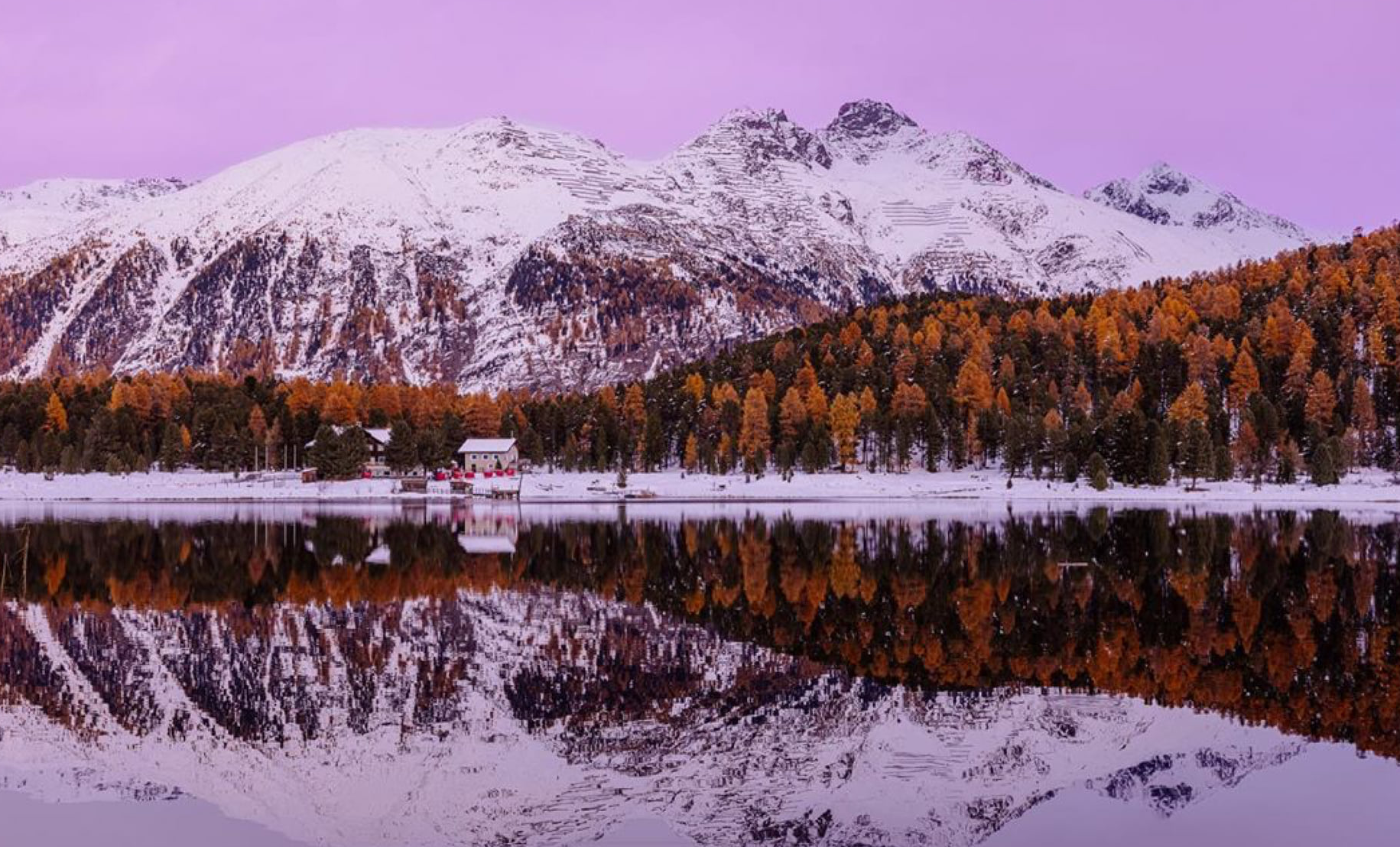
Would you like to conquer mountains and valleys, dive bravely into rushing waters or discover UNESCO World Heritage sites? Then we’ve got just what you need. The landscape of Switzerland is more varied than almost any other place on earth.




